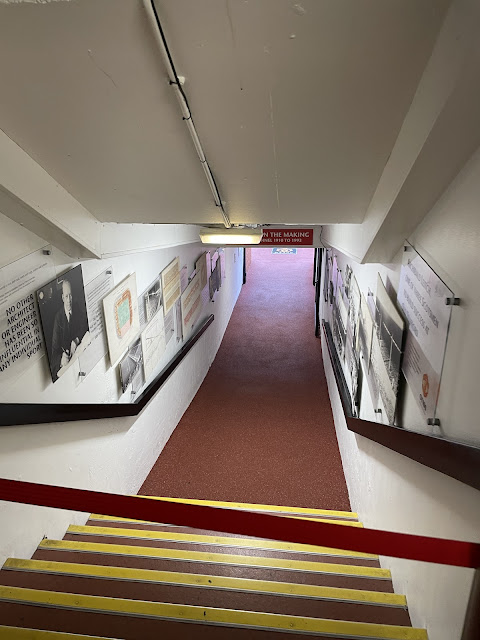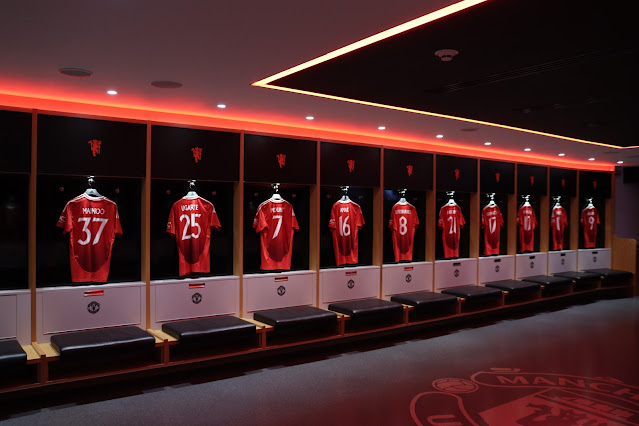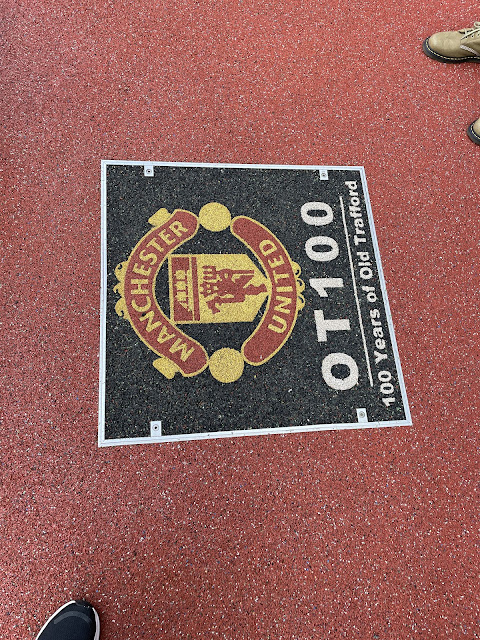The next day we started fairly early with a drive out to Wales, and a Football club called Wrexham.
Wrexham was a small mining town in wales that had been made famous when Ryan Reynolds and Rob McElhenney bought the town's struggling football club in November 2020 and made a tv show about it called "Welcome to Wrexham"
The club is the oldest club in Wales, founded in 1874 and the third oldest professional association football club in the world. Their ground, "The Racecourse Ground" is the World's oldest international football stadium that still hosts international matches.
The Wrexham club ran into financial difficulties in 1982 and had to sell of many of its good players, starting a downward spiral. The lack of players caused the club to be relegated from the higher leagues down into the fourth division, the lowest professional league. After the Bradford City stadium fire in 1985, the club was forced to close one of their stands as it did not meet the new safety requirements and there was not enough money to upgrade it.
In 2001 the club chairman, Alex Hamilton, tried to evict the club from the Racecourse Ground, so he could demolish it for new developments, but the club rallied and formed a fans association that managed to save the club from bankruptcy and save the stadium. A points deduction from being under financial administration caused the club to be relegated again and they eventually fell out of the main leagues into the "non-league" where they were stuck for 14 years.
One of the big issues with relegation is that the clubs receive less money from the Football association and have smaller salary caps, meaning that it is hard to acquire new players and break from the downward spiral. In 2020 Wrexham were struggling and the stadium was in need of renovation and repair. Ryan Reynolds and Rob McElhenney purchased the club, which greatly increased the visibility of the club and seeing them promoted back into the National Leagues. They are currently in League One, which is the third tier of the English Football system, behind Premier League and EFL Championship.
At the side of the ground is "The Turf", a supporters pub where the club was first formed, which features heavily in the show.
We had a quick walk around the stadium and stopped in at the shop before heading to our next destination.
Our next stop was Manchester and the Manchester United Stadium, Old Trafford, for a stadium tour. We had originally wanted to do a stadium tour at Stamford Bridge for Cameron to see Chelsea's home stadium, but they weren't running tours on Sundays, which was originally when we were going to be there. So we asked where he would want to see instead and he chose Old Trafford as it is one of the oldest, largest and most famous.
Old Trafford can hold 74,310 people making it the largest club football stadium in the UK, only behind Wembley as the UKs biggest football stadium. The stadium has served as the home ground for Manchester United since 1910, with only a small period from 1941-1945 where the team had to share a stadium with Manchester City, while the stadium was repaired from World War II bomb damage.
The day of our tour was an interesting one, with Manchester United firing their manager, Erik Ten Hag just a few hours before we arrived.
We had a quick lunch in the cafe at the ground before heading through the museum to start our tour, we didn't have time to tour the museum beforehand, so we returned after the tour.
One of the biggest things we noted immediately, beside the size of the stadium, was an overpowering smell of garlic. It turned out that the fields were being sprayed with garlic to ward off nematodes, a parasite that can damage the roots of the grass.
Our tour started in the Alex Fergusson stand and heading down to the pitch side. As with all football fields, the grass is highly protected and we weren't allowed onto the pitch.
 |
| Stretford (West) Stand |
 |
| Looking across at the Sir Bobby Charlton (South) Stand |
 |
| Scoreboard End Stand (East) |
After this we went inside and walked through the under-stand area:
 |
| Picture of Sir Alex Fergusson made from red threads from the team shirts |
We then came out on the Scoreboard stand - named because it originally held a large scoreboard that showed the scores in all other games, but has been removed and replaced with the stand:
 |
| The commentary box in the roof |
A large section of the Scoreboard Stand was set aside for disabled fans, allowing room for 170 fans and carers. Behind the stands was also an accessibility area
Next we walked along past the "old tunnel" the only remaining part of the original 1910 stadium, surviving the bombing in WW II and in use until 1993 when the new tunnel was built. This tunnel was renamed the Munich Tunnel in 2008 in memory of a tragic event in Manchester United History, when the team were travelling from West Germany on a return from a European cup game in Belgrade. On a third attempt to take off, the plane carrying the team nicknamed "Busby Babes" after manager Matt Busby, crashed and resulted in 23 deaths of the 44 on board.
Our next stop was the Manchester United home change room:
 |
| The black roller door at the end opens up to reveal the tactical whiteboards and screens |
 |
| Ice baths |
 |
| Sitting in the away bench seats |
 |
| The media room |














































No comments:
Post a Comment